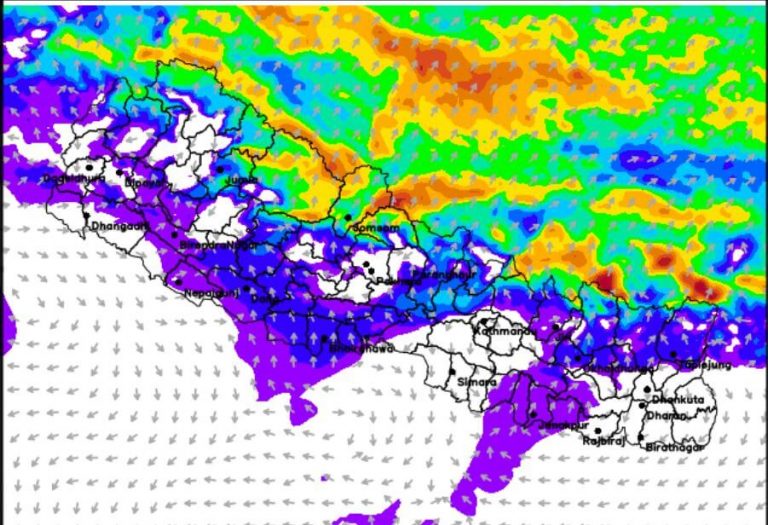
April 2, 2019
Mid-march to mid-May is pre-monsoon in Nepal. Though rainfall and blowing of winds are normal, it is unnatural for winds blowing at the speed of a typhoon. Accordingly, the Department of Hydrology and Meteorology has been making forecast of rain, heavy winds and snowfall.
However, a general curiosity has been raised over why did the department fail to forecast such scale of disaster that took place in Bara and Parsa on Sunday evening.
“The storm happened all of a sudden due to the impact of the westerly low pressure system seen since the past few days and active local weather system,” said Director General of the Department Surja Kumar Baidya. It is difficult to forecast such weather even in developed countries.
The forecast made by the Department at present is only for the immediate and not of the future. It is usually for only 72 hours. Even though the Department installed a weather radar at Surkhet, it is yet to come under operation for lack of technical staff. The impact of climate change too makes it difficult to forecast the weather conditions.
Meanwhile, former Director General of the Department Rishi Ram Sharma said that the strength of the storm in Bara and Parsa was around 80 km per hour, which falls into the category of a big storm.
Meteorologist Sujan Subedi says that there should be a separate study and research of storms that take place all of a sudden. However, in Nepal, not much of a forecast is made of storms but only of rain, snowfall, thunderstorm, clouds and temperature. (RSS)






